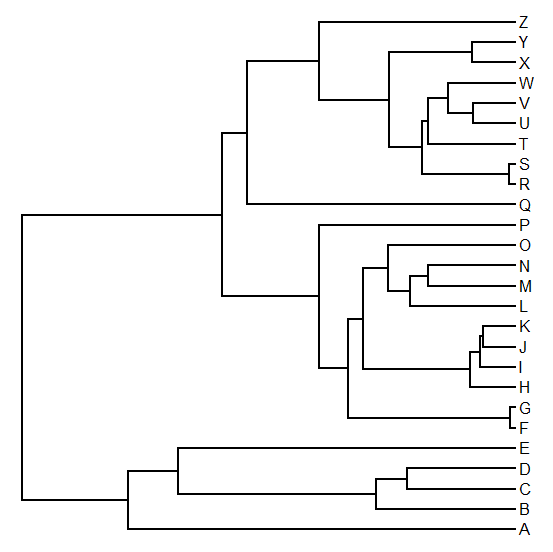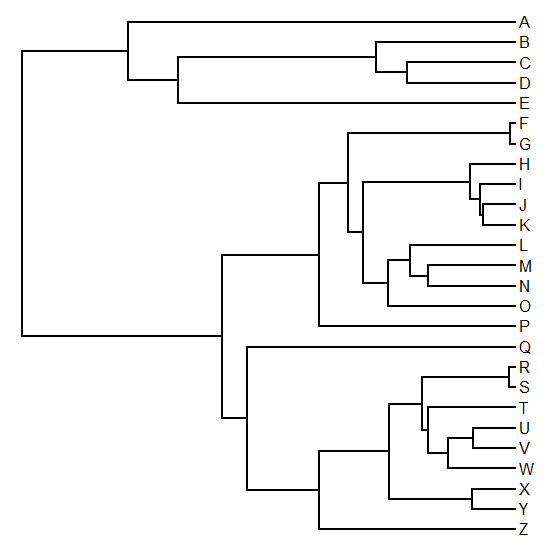phytools has a function to read simple Newick format trees (called read.newick). This function has been totally useless because it is completely redundant with read.tree in the 'ape' package. However a recent query on the R-sig-phylo email list got me wondering if there was any reason that the code from my recent major rewrite of read.simmap couldn't be harvested to re-write read.newick as a "robust" tree reader that can accept singleton nodes, etc.
First off - what is a singleton node. Most nodes in our tree have two or more descendants. A singleton node is a node with only one descendant. These are created by extra left & right parentheses in our Newick string. For example:
The code for my robust tree reader is here. Let's try to use read.tree and read.newick to read in the two trees above:
> source("read.newick.R")
>
> # read tree
> aa<-"(((A,B),(C,D)),E);"
> t1<-read.tree(text=aa)
> t2<-read.newick(text=aa)
>
> # plot
> par(lend=2) # for plotting
> par(mar=c(0.1,0.1,3.1,0.1))
> layout(matrix(c(1,2),1,2))
> plot(t1,edge.width=3,lend=2)
> title("read.tree")
> plot(t2,edge.width=3,lend=2)
> title("read.newick")
> t3<-read.tree(text=bb)
Error in if (sum(obj[[i]]$edge[, 1] == ROOT) == 1 && dim(obj[[i]]$edge)[1] > :
missing value where TRUE/FALSE needed
> t4<-read.newick(text=bb)
> layout(matrix(c(2,1),1,2))
> plot(t4,edge.width=3,lend=2)
Error in plot.phylo(t4, edge.width = 3, lend = 2) :
there are single (non-splitting) nodes in your tree; you may need to use collapse.singles()
> t4<-collapse.singles(t4)
> plot(t4,edge.width=3,lend=2)
> title("read.newick")
That's it.






















